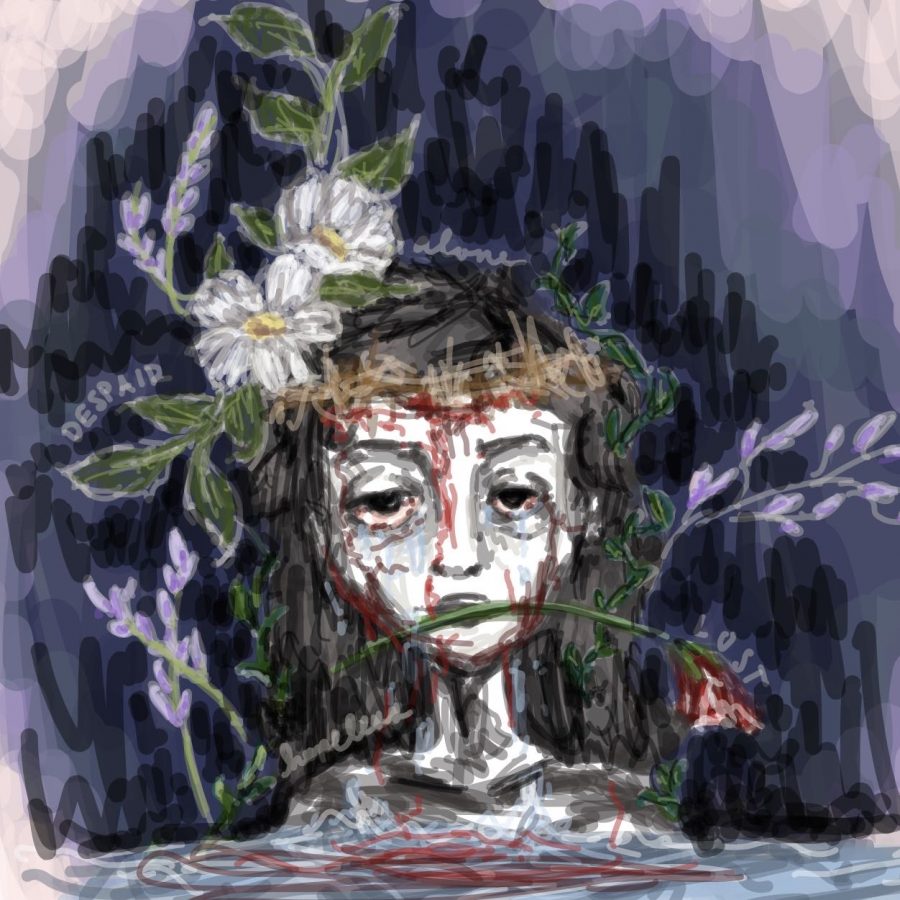Depression Is Not Pretty: Stop Romanticizing It
Romanticization of mental illness among adolescents distracts us from those who truly need medical attention.
How our culture sees mental illness as a beautiful tragedy
“Suicidal people are just angels ready to come home.”
“Her eyes ran out of tears so she forced her skin to cry instead.”
“It hurts, but it’s okay… I’m used to it.”
These quotes are not hard to come by scrolling through Instagram or Pinterest. Just sad teenage angst, right? Embodied in dimly lit, black and white photos with beautiful gloomy captions, shared and liked by adolescents who feel they can relate with the torment of depression, anxiety, or trauma.
The problem? This is not depression. This is not anxiety. This is not trauma.
I do not mean to downplay patients who truly suffer with these issues; in fact, my intention is the opposite—to raise awareness about the implications and consequences of glamorizing mental illness and how it influences consumers of such “depressing” media. As someone with multiple psychological diagnoses, on behalf of everyone else who has sat in the psychiatrist’s office desperate for a solution: it is ignorant and disrespectful to glorify what has damaged us for the sake of painting your natural, teenage, human sadness as something beautiful.
On various social media platforms, mental illness is displayed through poetry or art with the claimed purpose of removing stigma or reaching out to others who deal with the same hardships. The flowery quotes, aesthetically-pleasing artwork, or even engaging television dramas draw a dangerous kind of positive attention to eating disorders, forms of depression and anxiety, and self-harm.
But this strays far from the grave reality of these illnesses—life-threatening, medical illnesses.
According to the American Psychiatric Association (APA), mental disorders are recognizable by “sustained patterns of symptoms that negatively affect a person’s behavior, cognition, or emotional balance. […] For a person’s symptoms to be considered clinically significant, they must interfere with the person’s academic, professional, or social activities to a substantial degree” (“Mental Disorders”). Medical emotional disorders must cause disarray in one’s thoughts or feelings in order to have been correctly labeled, and any state falling short of “disorder” cannot be rightly diagnosed.
There exists a major difference between the ordinary, human experience of negative emotion and disordered thinking and functioning. These responses per se to typical hardships—namely, grief of the loss of a loved one, butterflies before an important job interview, disappointment after unexpected results, or even low self-esteem—do not meet the standard for psychiatric mental illness. More often than not, they pass after a reasonable amount of time, while conditions like major depressive disorder, generalized anxiety disorder (GAD), bipolar disorder, post-traumatic stress disorder (PTSD), or obsessive-compulsive disorder (OCD) must have persisted for a time particular to the illness in order for a trained psychiatrist to give a diagnosis.
Anxiety, for example, is actually a normal and beneficial experience that signals the brain’s fight-or-flight response when danger arises; anxiety is disordered when the patient suffers persistent and debilitating worry, often from situations that typically do not warrant a fearful response, according to the APA. When symptoms such as shortness of breath, insomnia, palpitations, fatigue, appetite changes, or difficulty concentrating on anything but the anxiety impede one’s daily life and functioning, a licensed psychiatrist can then make a proper diagnosis (hence the term “disorder”).
What we see in the media disregards the gravity of these illnesses and instead beautifies them—depression without the crushing weight of waking up every morning, anxiety without the terrifying inability to breathe, OCD without the torment of the never-ending compulsion cycle, eating disorders without the resulting serious mental and physical deterioration. We surround them with an aura of delicacy, a beautiful fragility, wistful helplessness, a glamorous tragedy—arguably a crucifixion complex.
But the misleading “portrayal of depression as hauntingly beautiful or suicide as poetically tragic” can often invalidate the crippling pain experienced daily by teen sufferers of mental illness (Buonomo). Normalizing anxiety or depression by reducing it to conditional sadness or worry only furthers the stigma surrounding seeking professional help. It increases the gap between adolescent patients and their community, discouraging them from confiding in a trusted adult or reaching out for clinical assistance. And it inaccurately displays their illness as a typical teenage emotionally unstable cry for attention.
Researchers at the University of Lebanon conducted interviews with various students to uncover the harmful effects of social media posts that romantically portray depression, self-harm, and eating disorders. According to their report, the teens labeled the artistic depictions of mental illness as “aesthetic” yet reacted with fearful hesitation to real photos of, for example, self-harm: note the glamorization. And one participant, a nineteen year old diagnosed with major depressive disorder, explained that “the seemingly deep and poetic imagery on social media definitely contributed to aggravating [his] mental health problem” (Jadayel et. al). It encourages sadness, isolation, and hopelessness. It directly encourages that which has kept suicide as the second leading cause of death among adolescents.
Open dialogue about mental and emotional health is of utmost importance, but we must be sure to approach it in the correct and effective way. Acknowledge the validity of those who fight a daily uphill battle against their own brain and direct them to seek help, but do not downplay the gravity of their illness as if it were a teenager’s artistic effort to seek attention. Otherwise, the ravaging fire of the beautified illnesses will only continue to burn and consume as the media willingly feeds it. Let us take concrete steps to manage and extinguish the flame—to save our teenagers.




